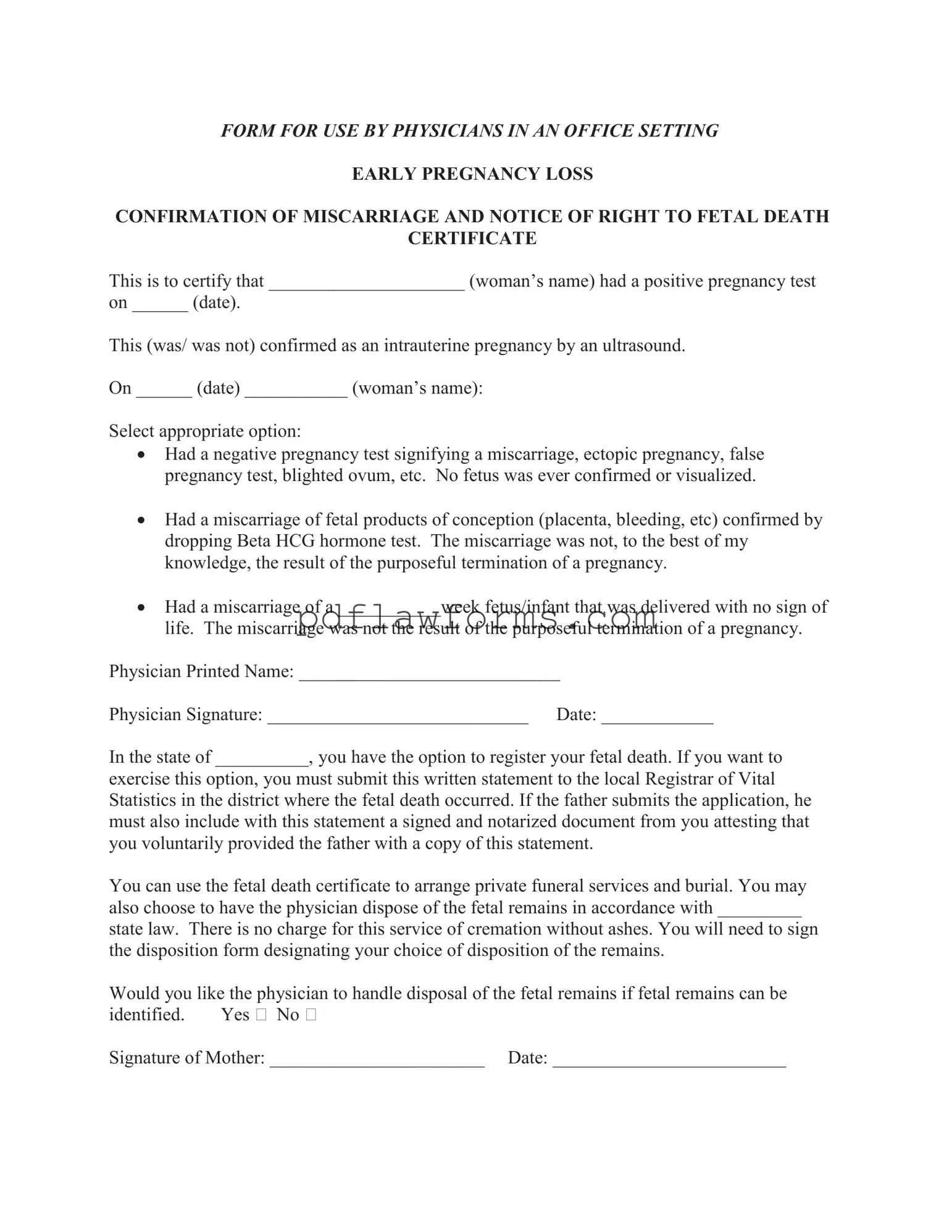The Miscarriage Discharge Paper form serves a critical role in documenting early pregnancy loss and providing necessary information to the affected individuals. Designed for use by physicians in an office setting, this form confirms the occurrence of a miscarriage and outlines the rights of the individual regarding fetal death certification. It includes essential details such as the woman’s name, the date of the positive pregnancy test, and whether an ultrasound confirmed an intrauterine pregnancy. The form also allows the physician to select from several options regarding the nature of the miscarriage, including whether it was confirmed by a negative pregnancy test or involved the delivery of a non-viable fetus. Additionally, it informs the individual about their right to register the fetal death with the local Registrar of Vital Statistics, should they choose to do so. This registration can facilitate arrangements for private funeral services or burial. Furthermore, the form addresses the options for the disposition of fetal remains, providing a compassionate choice for those facing such a loss. The physician’s printed name and signature, along with the mother’s signature, are required to validate the document, ensuring that all parties acknowledge the sensitive nature of the circumstances. Overall, the Miscarriage Discharge Paper form is an essential document that balances medical documentation with emotional support for individuals experiencing the profound loss of pregnancy.
